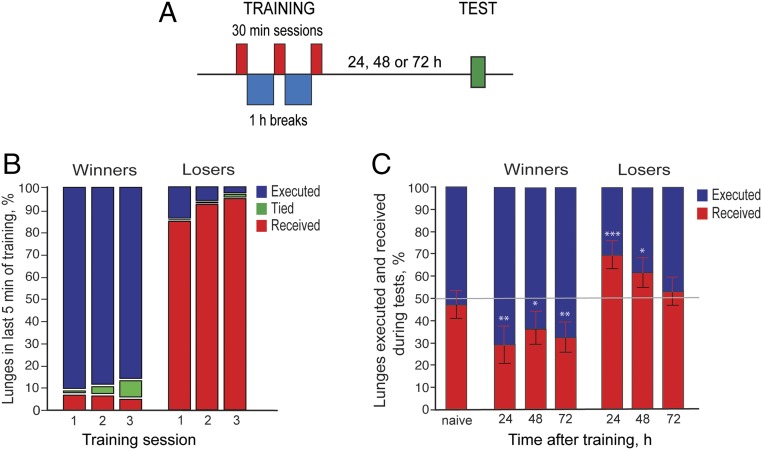Fig. 1.
Generation of a persistent winner and loser effect. (A) A single SH CS male was paired with a single opponent fly (hypoaggressive or hyperaggressive male) in three 30-min sessions, with a 1 h of rest in between sessions. Unfamiliar opponents were used in each fighting encounter. The winner or loser effect was tested 24, 48, or 72 h afterward. (B) Proportion of lunges received or executed during the last 5 min of training sessions of winners (n = 851) or losers (n = 897). A small proportion of fights in each group showed no dominance (tied). These males were used for all experiments described in this paper. (C) Trained flies were individually paired with naive SH CS males 24, 48, or 72 h after the last training session and the proportion of lunges executed or received quantified. The winner effect persisted for at least 72 h (one sample t test against 50%; nwinners = 19, 25, 35 at each respective time point; 24 h: **P < 0.01; 48 h: *P < 0.05; 72 h: **P < 0.01), while the loser effect persisted for 48 h (one sample t test against 50%; nlosers = 34, 37, 35 at each respective time point; 24 h: ***P < 0.001; 48 h: *P < 0.05; 72 h: P > 0.05). On average, the proportion of executed and received lunges for two naive SH CS males (left bar) was near 50% during the test period (one-sample t test, P > 0.05).

